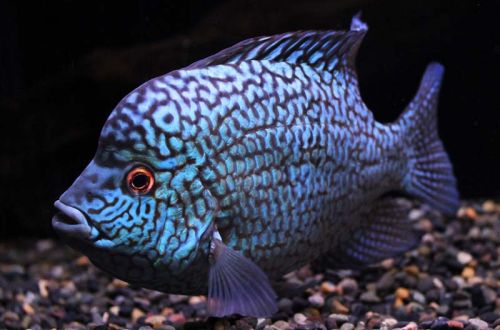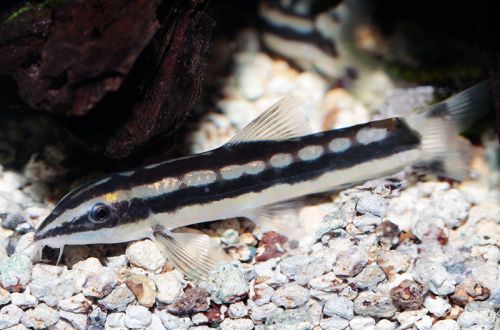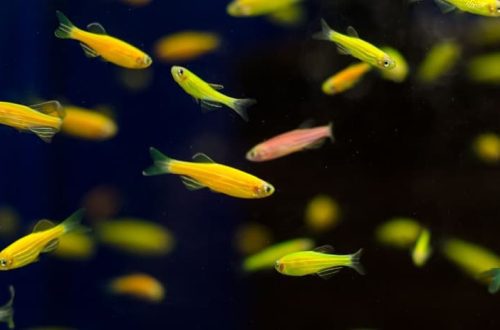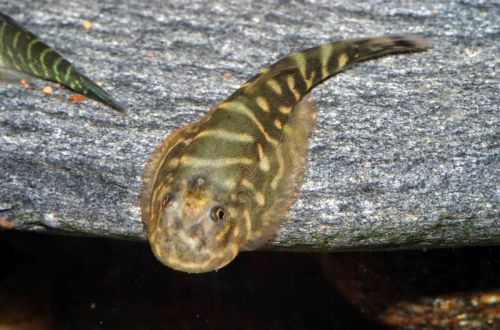
pearl cichlazoma
The pearl cichlazoma, scientific name Herichthys carpintis, belongs to the family Cichlidae (Cichlids). Temperamental bright fish. The content is relatively simple, the main problem is finding compatible species.

Contents
Habitat
Native to the eastern regions of Mexico. The natural habitat is limited to the Panuco River Basin, which includes numerous lake systems in the lower reaches of the river.
Brief information:
- The volume of the aquarium – from 200 liters.
- Temperature – 20-33°C
- Value pH — 6.0–7.5
- Water hardness – soft or medium hard (5-14 dGH)
- Substrate type – sandy or fine gravel
- Lighting – any
- Brackish water – no
- Water movement – light or moderate
- The size of the fish is up to 20 cm.
- Nutrition – any sinking food with herbal supplements
- Temperament – quarrelsome with bottom species
- Keeping alone or in a formed male/female pair
Description
Adults reach a length of up to 17–20 cm. However, there have been cases when the fish grew up to 30 cm, but this happens extremely rarely in home aquariums. The pearl cichlazoma has a tall body with a large head. Males can be distinguished by their pointed dorsal and anal fins.
The coloration consists of a pattern with numerous large dots of silver or turquoise. Black spots are located in the tail part of the body along the lateral line. There are regional variations with a predominance of greenish hues.
Another closely related species, the diamond cichlazoma (Herichthys cyanoguttatus), has a similar color, which is why they are often confused. It can be distinguished by smaller speckles and impressive size, for example, males grow up to 30 cm.
Food
They feed mainly at the bottom, sometimes digging up the ground in search of food. Dry sinking food (flakes, granules) with vegetable additives in the composition will become the basis of the daily diet. As a supplement, it is desirable to use live or frozen foods, such as bloodworms, brine shrimp.
Maintenance and care, arrangement of the aquarium
The optimal size of the aquarium for one pair of fish starts from 200 liters. In the design, it is necessary to provide places for shelters, which can be snags, heaps of stones and other natural or artificial decorative elements.
Rooting aquatic plants are not recommended. There is a high probability that they will be uprooted and damaged. As an alternative, plants floating on the surface are suitable.
Given the characteristics of nutrition, it is necessary to use a soft substrate of sand, fine gravel or any other similar fine soil.
The hydrochemical composition of water must be maintained in the region of neutral pH values (7.0) and the value of the total hardness in the range of 8–14 dGH. It is important to prevent the accumulation of organic waste that can adversely affect the nitrogen cycle. To this end, regular aquarium maintenance procedures are carried out and a productive filtration system is installed.
Behavior and Compatibility
Fish have not a simple disposition. Males are aggressive in defending their territory, attacking relatives and representatives of other species that have violated the border. Females are also not too friendly to tankmates, which is especially evident during the breeding season, when the couple guards their offspring.
In small aquariums, it is recommended to purchase only one formed pair, and the male and female should grow together from a young age. If you put together an adult male and female, who up to this point lived in different tanks, then it is likely that the fish will be hostile to each other.
Compatible only with large species and those who can protect themselves, for example, such catfish as plecostomuses.
Breeding / breeding
The most difficult stage in breeding is the search for a suitable pair. If the male and female are supportive of each other and are in a suitable habitat, then spawning will become a matter of time.
With the onset of the breeding season, the fish change, the color becomes more intense. After a short but active courtship, the female lays several hundred eggs. A place for masonry is usually chosen on a flat surface at the bottom, for example, a flat stone.
The incubation period lasts 2-3 days. The fry that appeared in the first days of life do not know how to swim and stay in one place, feeding on the remnants of the yolk sac. At this time, the parents move the brood to another place – a small hole at the bottom. From the moment the eggs appear and for several weeks, adult fish fiercely protect their offspring.
Fish diseases
Cases of the disease are rare and are usually associated with external influences. If certain symptoms are detected or the onset of a disease is suspected, it is first necessary to check the quality and hydrochemical composition of the water. If there are deviations from the norm, then take measures to eliminate them. Read more about symptoms and treatments in the Aquarium Fish Diseases section.





